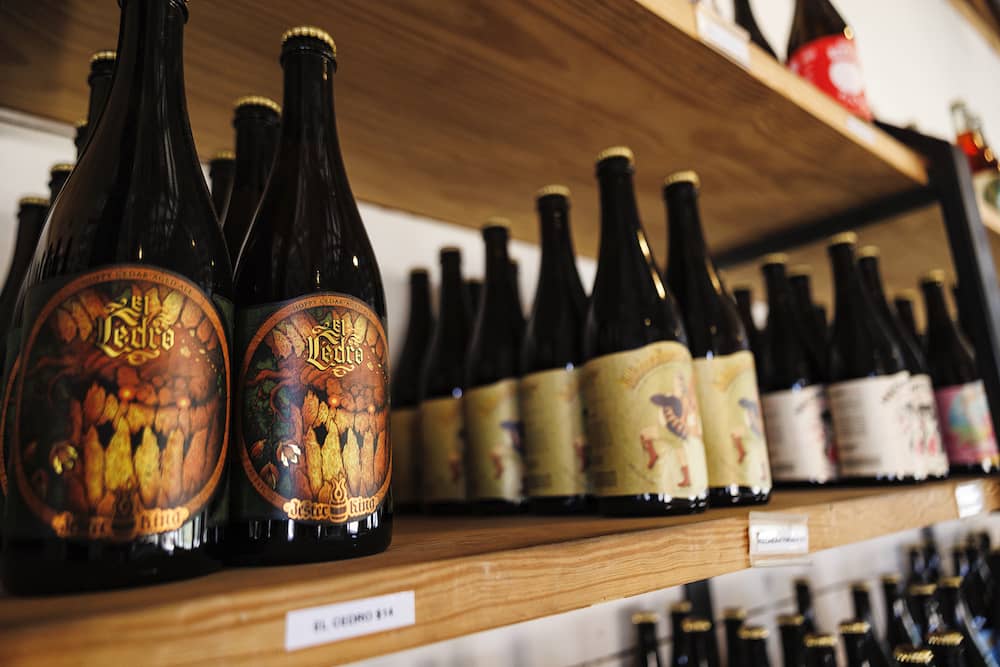The Ultimate Distillery Experience: From Grain to Glass, Whatever You Need to Know
Getting started on a trip via the ins and outs of the distillery procedure reveals a globe where science satisfies virtuosity in the development of spirits. From the careful choice of grains to the thorough crafting of each bottle, every step in the production line plays a crucial duty in forming the final product that enhances our glasses.
The Art of Grain Option
Picking the optimal grains is a critical step in the distillation process, determining the flavor profile and high quality of the last item. The kind of grain selected considerably influences the personality of the spirit being produced - Seawall Bar. Common grains utilized in distillation include barley, wheat, rye, and corn, each imparting unique flavors and features to the final item

Beyond taste considerations, the top quality and pureness of the grains are vital. Distillers thoroughly source grains to ensure they are complimentary from contaminants and possess the essential starch material for fermentation. By understanding the art of grain selection, distillers lay the foundation for producing remarkable spirits that captivate the taste buds.
Distillation Refine Demystified
Having established the structure with meticulous grain selection, the distillation process emerges as the transformative phase where the significance of the selected grains is unlocked and refined into a spirited type. Purification is a systematic procedure that depends on the concept of separating alcohol from a mix based on differences in boiling factors. Once the fermented mash is heated up in the still, the alcohol evaporates at a lower temperature than water and various other compounds, enabling its removal. As the alcohol vapors climb and pass via the still, they condense back right into fluid kind, leading to a greater proof distillate. This distillate, also called the 'heart cut,' is the purest and most desirable section of the purification run. However, the process doesn't finish there; multiple distillation runs or extra steps such as maturing in barrels may even more improve the spirit, improving its complexity, character, and flavor. Recognizing the details of the purification procedure is critical for creating top quality spirits that astound fanatics and connoisseurs alike.
Barrel Aging and Taste Development
During the barrel aging procedure, spirits undertake a transformative trip as they communicate with the wood, taking in nuanced flavors and establishing a rich complexity. The sort of wood utilized, typically oak, significantly affects the last taste of the spirit. Oak barrels are favored for their unique buildings that enhance the taste profile. As spirits age in the barrels, they draw out compounds such as vanillin, lignin, and tannins from the wood, adding to the advancement of aromas like vanilla, caramel, flavor, and even hints of toasted oak.
The porous nature of timber likewise enables the spirit to breathe, facilitating the combination of tastes over time. Depending on the period of aging and environmental problems like temperature level and humidity, spirits can get different attributes, from subtle wood notes to deep, complicated tastes that make each set distinct.
Craftsmanship in Bottling and Labeling
As spirits reach their ideal flavor profiles with barrel aging, the meticulous workmanship in bottling and classifying comes to be the following essential action in presenting a costs item to customers. The procedure of bottling and classifying is a crucial facet their website of the general distillery experience, as it is the last touchpoint before the product gets to the hands of consumers (Distillery in Galveston). Craftsmanship in bottling includes guaranteeing that each bottle is loaded precisely with the spirit, taking into consideration elements such as consistency in fill degrees and the avoidance of any impurities going into the bottle

Tasting and Valuing Fine Spirits
To totally appreciate fine spirits, one must engage all the senses in a mindful and calculated tasting experience. When sampling penalty spirits, it is crucial to begin by observing the spirit's appearance. Note the color, clarity, and viscosity of the liquid in the glass. Swirl the spirit carefully to launch its scent. The nose is an essential sense in sampling spirits; take a minute to inhale the complicated aromas deeply. Next, take a small sip and allow it remain on your palate. Take note of the different tastes that unravel - from sweet and fruity notes to spicy or smoky undertones. Think about the mouthfeel, noting if the spirit is smooth, silky, or fiery. Swish the spirit in your mouth to completely experience its appearance and preference. Ultimately, swallow gradually and appreciate the sticking around coating. Great spirits commonly leave a pleasant aftertaste that can reveal a lot more regarding the craftsmanship and high quality of the beverage. By involving all your detects in this way, you can really appreciate and value the complexities of great spirits.
Final Thought
In verdict, the distillery experience includes the intricate art of grain option, the specific purification procedure, the transformative barrel aging, the careful workmanship in bottling and classifying, and the innovative technique of sampling and valuing fine spirits. Each action in the production process plays a vital role browse around this site in creating high-quality spirits that captivate the detects and pleasure connoisseurs worldwide.
The type of grain chosen considerably influences the personality of the spirit being produced. By mastering the art of grain option, distillers lay the structure for developing exceptional spirits that mesmerize the taste buds.

Comments on “Seawall Bar: The Most Effective Drinks with an Ocean Sight in Galveston”